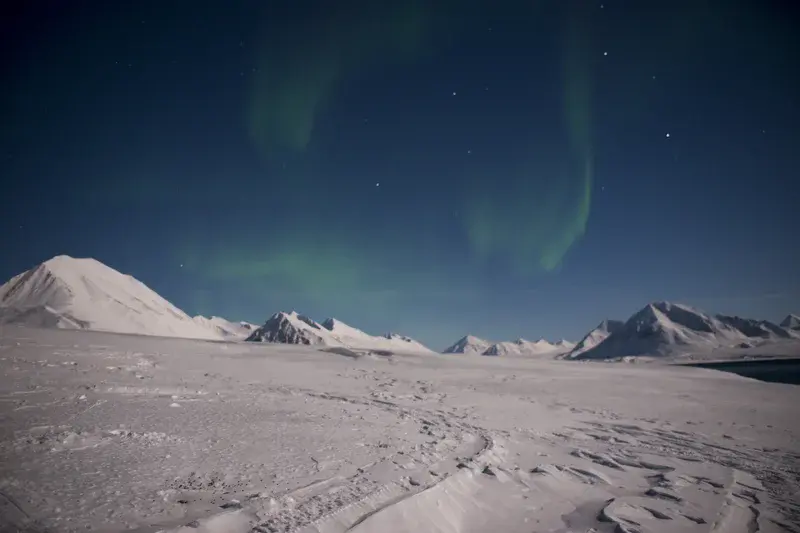
Aurora Borealis in Ny Ålesund, Svalbard
Aurora Borealis, which means Northern Lights are caused by electrically charged particles from the sun, which enter the Earth’s atmosphere and collide with gases such as oxygen and nitrogen. When the charged particles are blown towards the Earth by the solar wind, they are largely deflected by the Earth’s magnetic field. However, the Earth’s magnetic field is weaker at the poles and therefore some particles enter the Earth’s atmosphere and collide with gas particles. It has been found that in most instances northern and southern auroras are mirror-like images that occur at the same time, with similar shapes and colours. Auroras can appear in many vivid colours, although green is the most common. Auroras can also appear in many forms, from small patches of light that appear out of nowhere to streamers, arcs, rippling curtains or shooting rays that light up the sky with an incredible glow. Ny Ålesund, Svalbard constitutes an ideal platform for observing and investigating Aurora Borealis thanks to the scarcity of anthropogenic light sources and the dark polar night sky. This photo was kindly provided by Gregory Tran, who is going to be the AWIPEV Station Leader for the Overwintering period 2019-2020.
Featured on GeoLog, the official blog of the European Geosciences Union
Categories
Location
- Europe (3893)
- Northern Europe (924)
- Svalbard and Jan Mayen Islands (60)
- Exact location (11.9000 E, 78.9000 N)
Tags
Colours
Image properties
7279 × 4853 px;
image/jpeg; 19.8 MB
Camera:
Nikon D800
Software: Photoshop/Camera Raw
Taken on 18
January
2019
Submitted on 14 February 2019
Licence
Creative Commons Attribution-NonCommercial-NoDerivs 3.0 Unported (CC BY-NC-ND 3.0)
Credit
Konstantina Nakoudi (distributed via imaggeo.egu.eu)
Share
Appreciate
Report